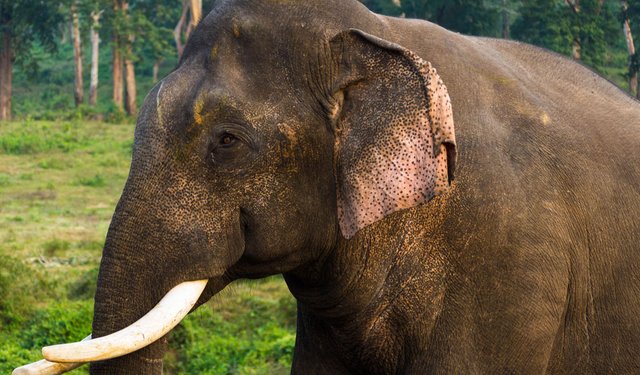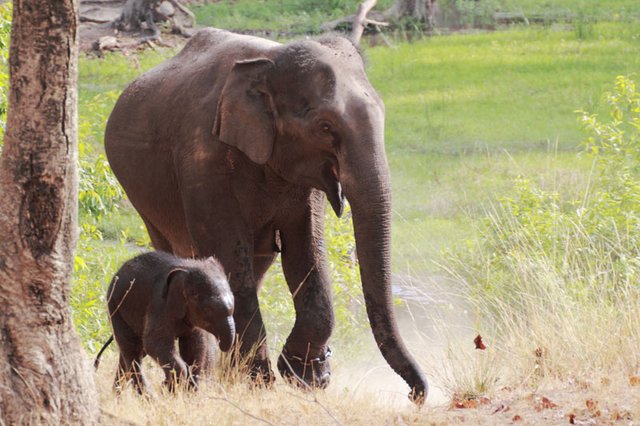


Image Source : Google
Asian elephants are the continent's largest terrestrial mammals. They can reach 6.4m in length and 3m at the shoulder, and weigh as much as 5 tonnes.
They are smaller than African elephants and have proportionally smaller ears, which they keep in constant motion in order to cool themselves. They also have a single 'finger' on the upper lip of their trunks as opposed to African elephants, which have a second one on the lower tip.
Their skin ranges from dark grey to brown, with patches of pink on the forehead, the ears, the base of the trunk and the chest.
A significant number of male Asian elephants are tuskless. The percentage of males with ivory varies from just 5% in Sri Lanka to aound 90% in southern India - possibly reflecting the intensity of past ivory hunting.
Habitat loss and fragmentation
Asia is the world’s most densely populated continent and a huge percentage of the elephants' former range has already been lost. And as the human population continues to grow, the species' remaining habitat is shrinking fast.
Large development projects (such as dams, roads, and mines), agricultural plantations and expanding human settlements have also fragmented elephant habitat. Wild elephant populations are now mostly small, isolated and unable to mingle as ancient migratory routes are cut off by human settlements.
Human-wildlife conflict
A substantial proportion of the world's human population live in or near the elephant's current range. And pressure is growing as Asia's population keeps rising and as more habitat is transformed into farmland. Elephants and people are now coming into contact more often – increasing the likelihood of human-wildlife conflicts.
Elephants sometimes raid farmers’ fields and damage their crops, which they rely on for their livelihoods. And elephants sometimes kill people. As a result, farmers occassionally kill elephants to protect their fields and families. Experts believe that these confrontations are now the leading cause of elephant deaths in Asia.
In some countries, the government provides compensation for crop damage or deaths caused by elephants, but there is still often strong political pressure on wildlife authorities to eliminate elephants near populated regions rather than to try to avoid conflicts.
Poaching and capture
Elephant poaching is not as severe a threat as it is in Africa, but Asian elephants are still killed for their tusks, meat and skin. They’re also taken from the wild for the live elephant trade – primarily going to Thailand for the tourism industry.
India, Vietnam, and Myanmar have banned capture in order to conserve their wild herds, but in Myanmar elephants are still caught each year for the timber industry or the illegal wildlife trade.
Unfortunately, crude capture methods have led to a high mortality level. Efforts are being made not only to improve methods but also to encourage captive breeding rather than taking from the wild.
Hi! I am a robot. I just upvoted you! I found similar content that readers might be interested in:
http://wwf.panda.org/what_we_do/endangered_species/elephants/asian_elephants/
Downvoting a post can decrease pending rewards and make it less visible. Common reasons:
Submit